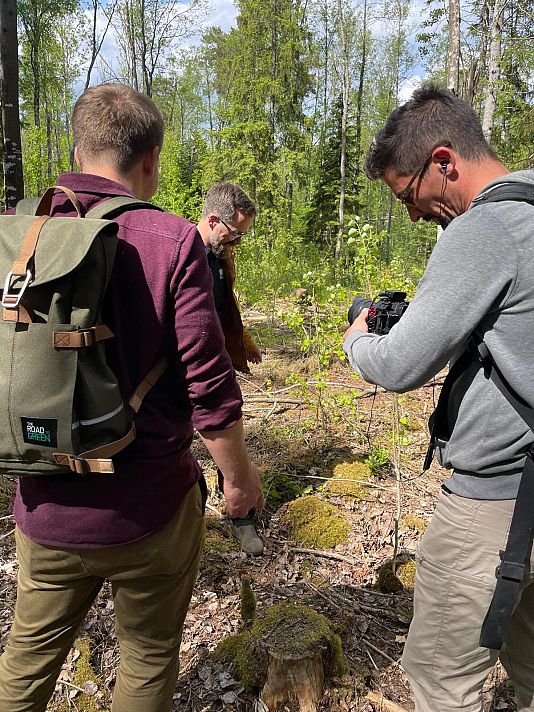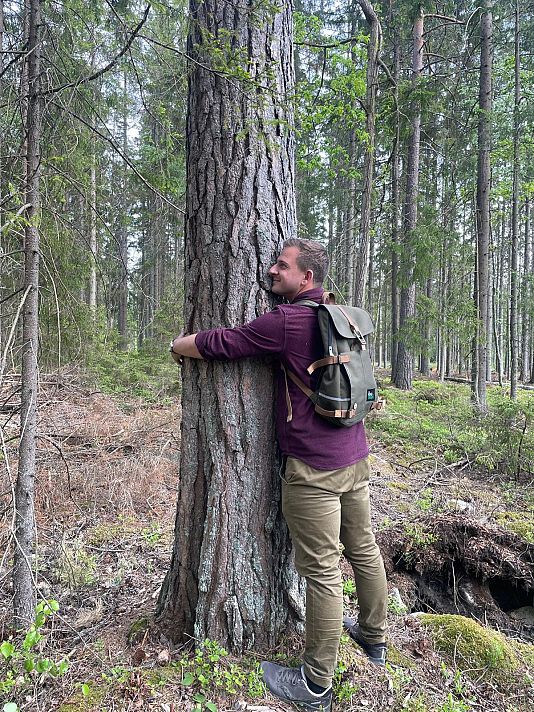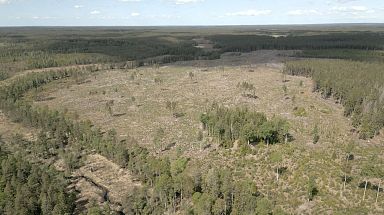Bigger and healthier forests: how can we protect our carbon sinks?
Sweden is one of the world’s biggest exporters of wood-based materials. We meet the foresters trying to promote more sustainable practices for the industry.
Europe is blessed with magnificent forests. They are vital to us: they clean our air and even help combat climate change. But they are also highly in demand.
We cut down trees to make our homes, our furniture, our paper. We have destroyed, replanted, and exploited forests. In Europe, the number of forests is increasing, but their health is declining.
So how can we restore them sustainably?
Forests cover two-thirds of Sweden and many people rely on them for their livelihood. It’s the most forested country in the European Union.
Although known for its pro-environment ethos, Sweden’s ancient forests have disappeared, and been replaced by monoculture tree crops.
Per Jiborn, a board member of the Swedish Society for Nature Conservation knows a thing or two about the subject. He agreed to show me the results of a technique often used in Sweden looks like. It's called clearcutting.
What is clearcutting?
Clearcutting is a logging technique where trees are cut down uniformly one by one in quick succession. It is favoured by some foresters as it is the quickest way to make a profit off cut-down trees.
However, as Jiborn shows, the impact it can leave on a block of land is devastating.
“10 years ago, all this was a forest. Now you have sun all day. All this will dry out. The insects have a totally different world in this area,” Jibborn says.
On top of insects having no soil to feed off, the once-forested land can’t retain carbon. More forests mean more carbon absorption – which in turn means less carbon hurting our environment.
“When the organic material is decomposing, it leaks carbon in the atmosphere. But a forest also has activities of storing carbon. On a clearcut, there is pretty much only the decomposition going on. And this means that here in Sweden it takes around at least seven years until the forest is only a carbon source,” explains a chief forester of Plockhugget and forest defender to Jiborn.
“A clearcut is a climate bomb. If you exclude the clear cut from the forestry, you exclude that ‘bomb’ part!” Steer adds.
The Swedish timber industry disputes this. It says it replants more trees than it cuts down and it claims it has a positive impact on climate.
More sustainable practices
Steer works with landowners who want to manage their forests more sustainably – like Peter Johnson.
On Johnson’s land, there is no clearcutting. Instead, the trees to be cut are selected. Those that have a high environmental value are left standing. And there are lots of them, with different varieties such as Spruce, pine, birch, oak, aspen, and ash.
The diversity in tree type helps plants and insects in the forest keep nourished. Johnson’s forests are managed using the 'continuous cover forestry' technique. It means fewer costs for preparing the soil and planting.
“Now we have only the cost of taking down one tree that generates good profit. And we have the forest that is still here. Many costs we used to have for cutting small trees, they are gone,” Johnson says.
Forests then fully play their role as carbon sinks. This is one of the objectives of a major Nature Restoration Law currently negotiated at EU level.
What is the Nature Restoration Law?
The European Union wants to improve the condition of ecosystems well beyond natural parks, with the aim of restoring the ecosystems by 2050. But there is work to be done in the forests.
Almost half of them are in poor condition, according to Virginijus Sinkevičius, the European Commissioner for the Environment.
“Forests are multi-taskers. They clear our air, they give us shade and mitigate the temperatures, but they are also a great carbon sink. And if we lose this carbon sink, then we lose one of the most important values that forests bring us,” Sinkevičius tells Euronews.
The Nature Restoration law does not just tie itself to the forestry economy either. Instead the EU seeks to increase green spaces in urban spaces, restore marine ecosystems and reverse the decline in pollination insects.
Can a future European law on nature restoration change the landscape of Sweden?
“I think it's a possibility (opportunity). Because we can use more forest for recreation, nature-based tourism, and we could make more money and generate more jobs,” Jiborn concludes.
Views and opinions expressed in this report are solely those of the speakers and do not necessarily represent the views and opinions of the European Commission or any other entities.














